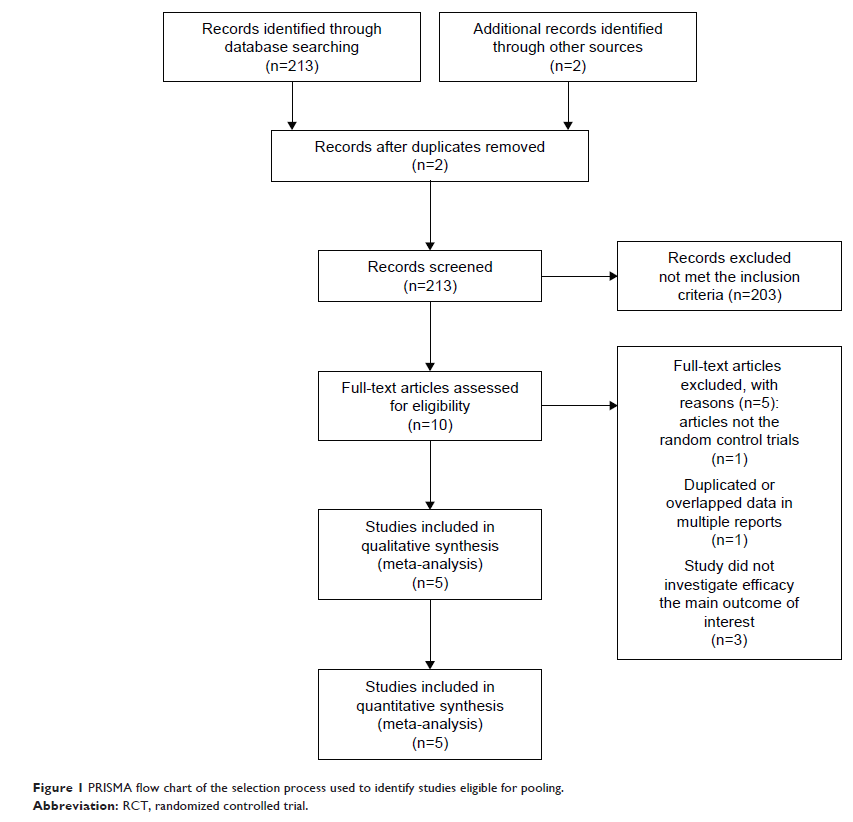9 0 8 0 2
论文已发表
注册即可获取德孚的最新动态
IF 收录期刊
- 2.6 Breast Cancer (Dove Med Press)
- 3.9 Clin Epidemiol
- 3.3 Cancer Manag Res
- 3.9 Infect Drug Resist
- 3.6 Clin Interv Aging
- 4.8 Drug Des Dev Ther
- 2.8 Int J Chronic Obstr
- 8.0 Int J Nanomed
- 2.3 Int J Women's Health
- 3.2 Neuropsych Dis Treat
- 4.0 OncoTargets Ther
- 2.2 Patient Prefer Adher
- 2.8 Ther Clin Risk Manag
- 2.7 J Pain Res
- 3.3 Diabet Metab Synd Ob
- 4.3 Psychol Res Behav Ma
- 3.4 Nat Sci Sleep
- 1.9 Pharmgenomics Pers Med
- 3.5 Risk Manag Healthc Policy
- 4.5 J Inflamm Res
- 2.3 Int J Gen Med
- 4.1 J Hepatocell Carcinoma
- 3.2 J Asthma Allergy
- 2.3 Clin Cosmet Investig Dermatol
- 3.3 J Multidiscip Healthc

罗苏伐他汀预防造影剂引起的急性肾损伤的荟萃分析
Authors Zhang J, Guo Y, Jin Q, Bian L, Lin P
Received 22 June 2018
Accepted for publication 1 August 2018
Published 31 October 2018 Volume 2018:12 Pages 3685—3690
DOI https://doi.org/10.2147/DDDT.S178020
Checked for plagiarism Yes
Review by Single-blind
Peer reviewers approved by Dr Cristina Weinberg
Peer reviewer comments 2
Editor who approved publication: Dr Qiongyu Guo
Background: Contrast-induced nephropathy (CIN) is a complication after the intravascular administration of a contrast medium injection. Previous studies have investigated statins as therapy for CIN due to its positive results in the prevention of contrast-induced acute kidney injury (CI-AKI). Nevertheless, the beneficial effects of rosuvastatin pretreatment in preventing CIN in patients with acute coronary syndromes still remain controversial. In this study, we performed a meta-analysis of randomized controlled trials (RCTs) to evaluate the beneficial impact of rosuvastatin in the prevention of CI-AKI in acute coronary syndrome patients.
Methods: PubMed, Embase, and Cochrane library were searched, for RCTs, updated on January 2018. The method was to evaluate rosuvastatin prior to angiography for the prevention of CI-AKI in patients undergoing coronary angiography, of which the main outcome was the incidence of CIN.
Results: A total of five RCTs were included in this analysis. Patients treated with rosuvastatin prior to invasive angiography had a significantly lower incidence of CI-AKI than controls (odds ratio [OR]: 0.53, 95% CI: 0.40–0.71, P <0.0001). Moreover, the subgroup analysis also showed that the benefit of rosuvastatin for patients with chronic kidney disease (OR: 0.49, 95% CI: 0.26–0.92, P =0.03) and diabetes mellitus (OR: 0.56, 95% CI: 0.38–0.83, P =0.004) which was consistent in compared with the respective control groups.
Conclusion: The findings of this meta-analysis suggest that the preoperative rosuvastatin treatment significantly reduces the risk of renal insufficiency of CIN in at-risk patients with chronic kidney disease or diabetes mellitus. Additional studies are needed to identify at-risk patients, provide optimum dose peri-procedural treatment, and reduce the incidence of CIN.
Keywords: contrast-induced nephropathy, coronary angiography, rosuvastatin, meta-analysis
